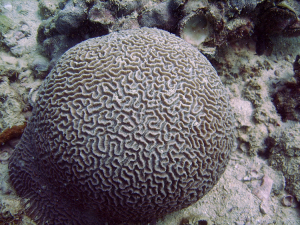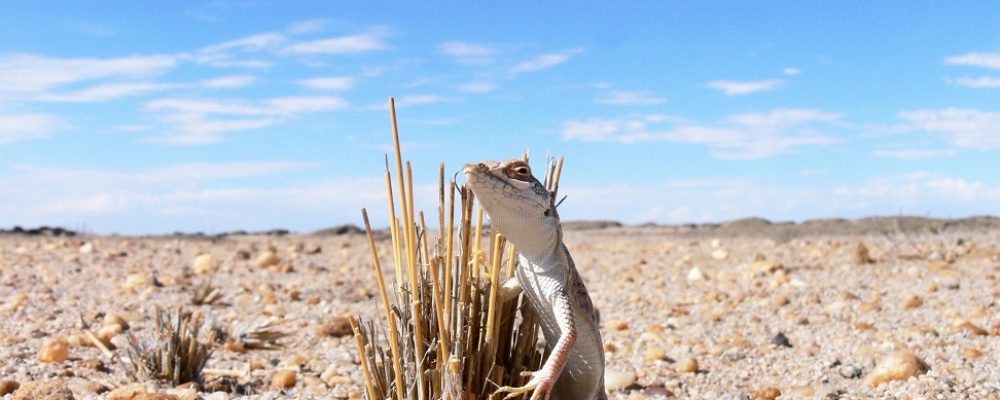In just 10 years, NYU Abu Dhabi (NYUAD) has made significant discoveries and contributed important knowledge to our rapidly changing natural environment. From rising sea-levels to the discovery of new species, researchers at NYUAD are investigating the future of our planet and taking a multidisciplinary approach to solving some of humanity’s greatest challenges.
Highlights of the past decade of NYUAD research into the natural world include:
- Rising seas
Greenland and parts of Antarctica are disappearing at an alarming pace. Scientists have trekked to remote locations across the globe to measure and witness polar ice loss first-hand, recording glaciers cracking apart and icebergs larger than cities plunging into the ocean. Research lead: Professor of Mathematics at NYU’s Courant Institute of Mathematical Sciences and Principal Investigator for NYU Abu Dhabi’s Center for Sea Level Change David Holland
2. Monsoon predictions
Climate scientists discovered a growing teleconnection in a warming world between summer monsoon rainfall in India and year-to-year variability of sea surface temperatures in the tropical Atlantic Ocean.Climate models also show a rapidly warming Indian Ocean could reduce the length of the Indian monsoon season by as much as 11 days and result in less rainfall.
Research lead: Senior Research Scientist at NYUAD’s Center for Prototype Climate Modeling (CPCM) Ajaya Ravindran
3. Extinction threat
Lizards have been around for millions of years and are known for being highly adaptable to their environment. However, the looming extinction of certain cold-adapted lizards might be evidence that some species are unable to cope with climate change.
NYUAD spokesperson: Postdoctoral Associate Sebastian Kirchhof
4. Curious creatures
There are many kinds of puddle frogs, but none quite like the half-inch, skinny-legged phrynobatrachusbibitadwarf puddle frog discovered living in a remote forest in Ethiopia.
Research lead: NYU Abu Dhabi Program Head of Biology, Professor of Biology, and the paper’s lead researcher StéphaneBoissinot
5. An illuminating discovery
In nature, a tiny Brazillian pumpkin toadlet appears harmless and orange-colored to the human eye. The same poisonous frog, however, glows bright blue under UV light. Its luminescence could be a mating call, or a sign to warn off predators.
Research lead: NYU Abu Dhabi Postdoctoral AssociateSandra Goutte
6. Food security
Date palms are an essential food crop in the Middle East. Genome sequencing research at NYU Abu Dhabi has significantly advanced our understanding of date palms and the nature of their sweet fruits. Specifically, researchers have identified the genes and mutations that influence color and sugar level. The more science discovers about how date palms survive in harsh desert conditions, the more likely they’ll be around to feed future generations.
Research lead: Lead Scientist and Silver Professor of Biology at New York University, faculty investigator at NYUAD’s Center for Genomics and Systems Biology Michael Purugganan
7. Seeding coral colonies
In two different ocean environments in Abu Dhabi and Fujairah, a team of marine biology and environmental genomics researchers demonstrated that epigenetic modifications in reef-building corals can be transmitted from parents to their offspring. This discovery opens up new approaches to stem the loss of this foundation species of marine ecosystems impacted by climate change. The NYUAD researchers worked with former NYUAD postdoctoral associate Emily Howells and colleagues from King Abdullah University of Science and Technology (KAUST).
Research lead: Associate Professor of BiologyJohn Burt, NYUAD Assistant Professor of Biology Youssef Idaghdour
8. Natural Products
Palm oil cultivation is a threat to global forests. A unique type of freshwater alga in the UAE is thought to be a viable alternative to palm oil.“We believe alga can be of both commercial and environmental benefit once it is further developed,” said KouroshSalehi-Ashtiani, associate professor of biology.
Research lead: Associate Professor of Biology KouroshSalehi-Ashtiani
9. Green Construction
Cement factories are big polluters. Leftover salt from the process of water desalination could provide a more sustainable way to make cement. “This kind of cement is not just environmentally sustainable but it’s also cost efficient,” explained Kemal Celik, professor of civil engineering.
Research lead: Professor of Civil Engineering Kemal Celik
10. Explaining the Sun’s dark spots
Researchers from the Center for Space Science at NYU Abu Dhabi and colleagues studied twenty-three years worth of data about our Sun to reinforce our understanding of how sunspots, which are magnetized regions on the Sun, are formed.
Research lead: Research Professor at Center for Space Science Laurent Gizon






